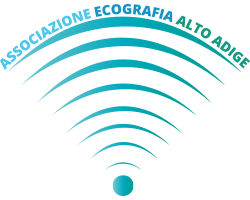Emergent Large Vessel Occlusion Stroke During New York City’s COVID-19 Outbreak
Clinical Characteristics and Paraclinical Findings
Shahram Majidi, Johanna T. Fifi, Travis R. Ladner, Jacques Lara-Reyna, Kurt A. Yaeger, Benjamin Yim, Neha Dangayach, Thomas J. Oxley, Tomoyoshi Shigematsu, Benjamin R. Kummer, Laura K. Stein, Jesse Weinberger, Michael G. Fara, Reade De Leacy, Mandip S. Dhamoon, Stanley Tuhrim, J Mocco
Abstract
Background and Purpose: The 2019 novel coronavirus outbreak and its associated disease (coronavirus disease 2019 [COVID-19]) have created a worldwide pandemic. Early data suggest higher rate of ischemic stroke in severe COVID-19 infection. We evaluated whether a relationship exists between emergent large vessel occlusion (ELVO) and the ongoing COVID-19 outbreak.
Methods: This is a retrospective, observational case series. Data were collected from all patients who presented with ELVO to the Mount Sinai Health System Hospitals across New York City during the peak 3 weeks of hospitalization and death from COVID-19. Patients’ demographic, comorbid conditions, cardiovascular risk factors, COVID-19 disease status, and clinical presentation were extracted from the electronic medical record. Comparison was made between COVID-19 positive and negative cohorts. The incidence of ELVO stroke was compared with the pre-COVID period.
Results: Forty-five consecutive ELVO patients presented during the observation period. Fifty-three percent of patients tested positive for COVID-19. Total patients’ mean (±SD) age was 66 (±17). Patients with COVID-19 were significantly younger than patients without COVID-19, 59±13 versus 74±17 (odds ratio [95% CI], 0.94 [0.81–0.98]; P=0.004). Seventy-five percent of patients with COVID-19 were male compared with 43% of patients without COVID-19 (odds ratio [95% CI], 3.99 [1.12–14.17]; P=0.032). Patients with COVID-19 were less likely to be White (8% versus 38% [odds ratio (95% CI), 0.15 (0.04–0.81); P=0.027]). In comparison to a similar time duration before the COVID-19 outbreak, a 2-fold increase in the total number of ELVO was observed (estimate: 0.78 [95% CI, 0.47–1.08], P≤0.0001).
Conclusions: More than half of the ELVO stroke patients during the peak time of the New York City’s COVID-19 outbreak were COVID-19 positive, and those patients with COVID-19 were younger, more likely to be male, and less likely to be White. Our findings also suggest an increase in the incidence of ELVO stroke during the peak of the COVID-19 outbreak.
Keywords: acute stroke, coronavirus disease, hospitalization, incidence, pandemics.
Fonte:
Stroke. 2020;51:2656–2663.
DOI: 10.1161/STROKEAHA.120.030397
© 2020 American Heart Association, Inc.
